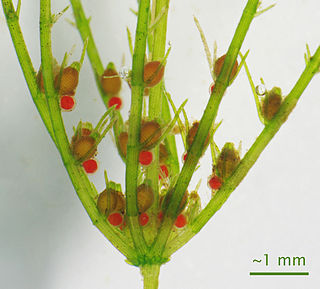 W
WA sex organ is any part of an animal's body that is involved in sexual reproduction. The reproductive organs together constitute the reproductive system. The testis in the male, and the ovary in the female, are called the primary sex organs. All others are called secondary sex organs, divided between the external sex organs—the genitals or genitalia, visible at birth in both sexes—and the internal sex organs.
 W
WAn aedeagus is a reproductive organ of male arthropods through which they secrete sperm from the testes during copulation with a female. It can be thought of as the insect equivalent of a mammal's penis, though the comparison is fairly loose given the greater complexity of insect reproduction.
 W
WCyphopods, also known as vulvae, are paired sacs in female millipedes that located on the underside of the third body segment that store sperm and connect to the oviduct. Cyphopods are sclerotized, and usually hidden behind a small opening. Despite the connotation of the suffix -pod, cyphopds are not derived from walking legs.
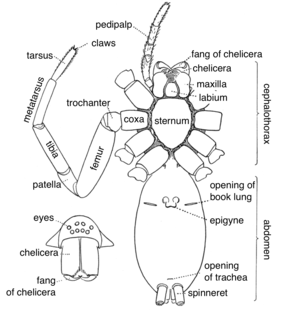 W
WThe epigyne or epigynum is the external genital structure of female spiders. As the epigyne varies greatly in form in different species, even in closely related ones, it often provides the most distinctive characteristic for recognizing species. It consists of a small, hardened portion of the exoskeleton located on the underside of the abdomen, in front of the epigastric furrow and between the epigastric plates.
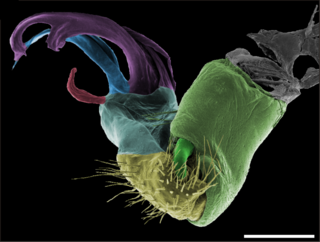 W
WGonopods are specialized appendages of various arthropods used in reproduction or egg-laying. In males, they facilitate the transfer of sperm from male to female during mating, and thus are a type of intromittent organ. In crustaceans and millipedes, gonopods are modified walking or swimming legs. Gonopods may be highly decorated with elaborate structures which may play roles in sperm competition, and can be used to differentiate and identify closely related species. Gonopods generally occur in one or more pairs, as opposed to the single (un-paired) reproductive organs such as the aedeagus of insects or the penis of harvestmen.
 W
WA hectocotylus is one of the arms of male cephalopods that is specialized to store and transfer spermatophores to the female. Structurally, hectocotyli are muscular hydrostats. Depending on the species, the male may use it merely as a conduit to the female, or he may wrench it off and present it to the female.
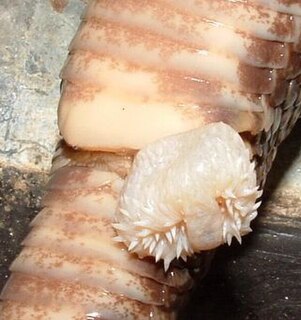 W
WA hemipenis is one of a pair of intromittent organs of male squamates. Hemipenes are usually held inverted within the body, and are everted for reproduction via erectile tissue, much like that in the human penis. They come in a variety of shapes, depending on species, with ornamentation, such as spines or hooks.
 W
WThe penis of the Opiliones (harvestmen) is an intromittent organ that is not present in other arachnids. It consists of a long shaft and a terminal capsule called a glans, containing a stylus and ejaculatory duct. It may have from one to three muscles, or none as in the specialized lineage Grassatores, where the penis is operated by haemolymph pressure. In some members of the Cyphophthalmi, the structure has been termed a "spermatopositor".
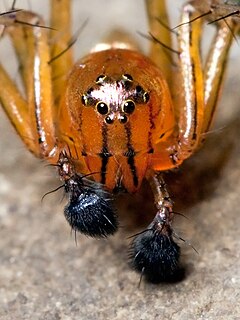 W
WPedipalps are the second pair of appendages of chelicerates – a group of arthropods including spiders, scorpions, horseshoe crabs, and sea spiders. The pedipalps are lateral to the chelicerae ("jaws") and anterior to the first pair of walking legs.
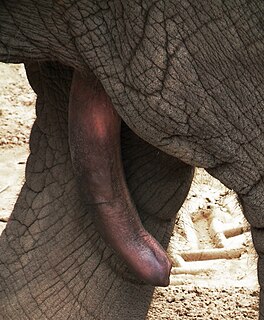 W
WA penis is the primary sexual organ that male animals use to inseminate females during copulation. Such organs occur in many animals, both vertebrate and invertebrate, but males do not bear a penis in every animal species, and in those species in which the male does bear a so-called penis, the penises in the various species are not necessarily homologous.
 W
WThe scrotum is an anatomical male reproductive structure located caudal to the penis that consists of a suspended dual-chambered sack of skin and smooth muscle. It is present in most terrestrial male mammals. The scrotum contains the external spermatic fascia, testes, epididymis, and ductus deferens. It is a distention of the perineum and carries some abdominal tissues into its cavity including the testicular artery, testicular vein, and pampiniform plexus. The perineal raphe is a small, vertical, slightly raised ridge of scrotal skin under which is found the scrotal septum. It appears as a thin longitudinal line that runs front to back over the entire scrotum. In humans and some other mammals the scrotum becomes covered with pubic hair at puberty. The scrotum will usually tighten during penile erection and when exposed to cold temperature. One testis is typically lower than the other to avoid compression in the event of impact.
 W
WA spermatophore or sperm ampulla is a capsule or mass containing spermatozoa created by males of various animal species, especially salamanders and arthropods, and transferred in entirety to the female's ovipore during reproduction. Spermatophores may additionally contain nourishment for the female, in which case it is called a nuptial gift, as in the instance of bush crickets. In the case of the toxic moth Utetheisa ornatrix, the spermatophore includes sperm, nutrients, and pyrrolizidine alkaloids which prevent predation because it is poisonous to most organisms. However, in some species such as the Edith's checkerspot butterfly, the "gift" provides little nutrient value. The spermatophore transferred at mating has little effect on female reproductive output.